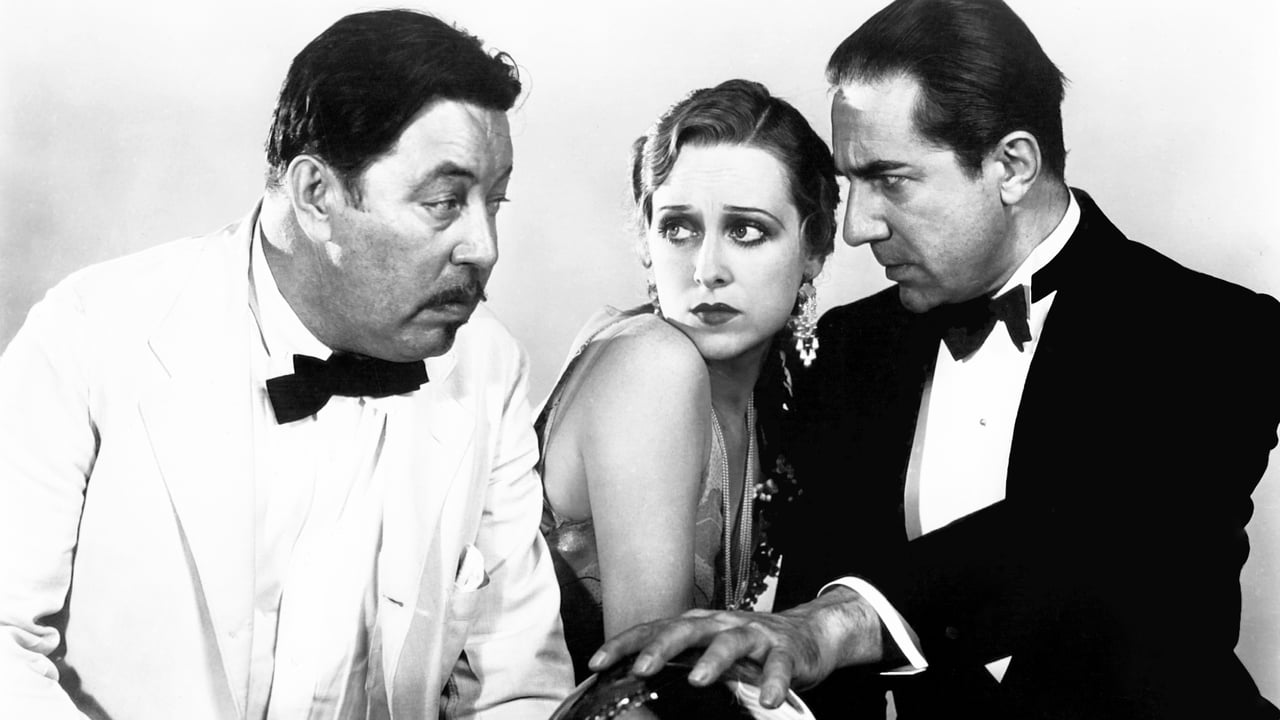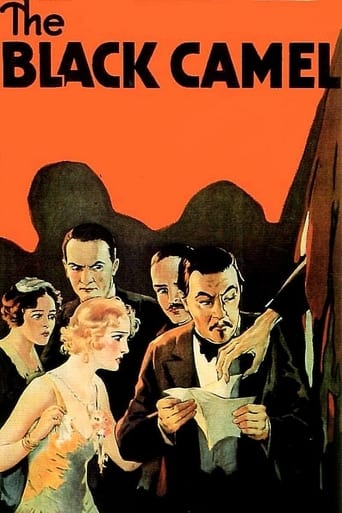

Load of rubbish!!
... View MoreThe movie's neither hopeful in contrived ways, nor hopeless in different contrived ways. Somehow it manages to be wonderful
... View MoreThere are moments that feel comical, some horrific, and some downright inspiring but the tonal shifts hardly matter as the end results come to a film that's perfect for this time.
... View MoreActress is magnificent and exudes a hypnotic screen presence in this affecting drama.
... View MoreEarly Charlie Chan film notable today for being the only one of the first five Warner Oland Charlie Chan films to survive. The other four are sadly lost. Charlie Chan (Warner Oland) investigates a movie star's murder and how it connects to an unsolved murder from three years earlier. The suspects include Bela Lugosi as a psychic, Dwight Frye as a butler, and Robert Young, in his film debut, as an annoying guy who keeps coming up with lame slogans.Interesting early non-horror work from Lugosi. At times, he seems so different from the Lugosi we know -- more at ease and not at all hammy. At other times he is the Bela we expect -- mid-sentence pauses and exaggerated facial expressions. Oland is good but he would get better as the series goes along. There are no sons for Charlie here, but he does have a rather unfunny sidekick named Kashimo (Otto Yamaoka). Very nice direction and a script based on Earl Derr Biggers' book of the same name. A must for Chan fans.
... View MoreSYNOPSIS: A film star is murdered whilst making a movie on location in Honolulu. (Of course, there is no black camel anywhere in the plot, but you can't have everything).COMMENT: This, the 5th movie in the Charlie Chan series is one of the best. To begin with, it boasts a great cast. True, Bela Lugosi is often photographed from somewhat unflattering angles, but this, if anything, makes his characterization more interesting. Another point in the movie's favor, of course, is Warner Oland, here giving a more rounded interpretation before Chan became stereotyped. Otto Yamoaka tends to overdo the comedy relief, but his scenes are brief and even, at times, mildly amusing. As the female lead, Sally Eilers is cast in the shadow of Dorothy Revier, who, although she has a much smaller role, is the girl you remember. And although not always photographed to his advantage, Robert Young, also makes a lasting impression despite the fact that the sub-plot in which he is cast is ho-hum conventional. Another character everyone always remembers from this entry is the beach bum so convincingly yet charismatically played by Murray Kinnell. And of course a final point which stays in everyone's memory is the appearance (in both senses of the word) of Hamilton MacFadden as the film-within-the-film's director and Daniel B. Clark as the location cameraman.
... View MoreIt's rare that films from the early 1930's show us actual location films shot in Hawaii, and this fascinating early Chan mystery is loaded with glimpses of the local beaches as well as the lobby and veranda of the Royal Hawaiian hotel--in addition to a print that leaps off the screen in dynamic black and white seldom seen in such clarity.Technique and location aside, this is also a baffling mystery--sometimes slow-paced, to be sure, in comparison with the later "cheapie Chans," but jammed with appearances by some memorable character actors--Bela Lugosi in a turban, for instance, a year after he made Dracula his signature role, or an impossibly juvenile Robert Young in his first film appearance--dig that striped bathing costume! In so many ways, this is one of the very best Chan films, a treat for both fans of early talkie cinema, and certainly for followers of the intrepid Chinese detective as his character was beginning to jell.
... View MoreThis is more interesting than some of the other entries in the series. In 1931 Fox seemed to be hitting its stride with Warner Oland. The plot isn't very different, but the director, Hamilton MacFadden, handles the story with zip. It must have cost more. When Charlie is interrogating a suspect, the others stand around in a semi circle although they have nothing much to contribute except expressions of concern or scowls of disapproval. There aren't many atmosphere people because there's little need for them, but they're managed nicely too. It all adds visual texture.And, as far as I can remember, this is the only Charlie Chan movie I've ever seen that was actually shot on location. We see the Royal Hawaiian Hotel, Diamond Head, the Punchbowl, all tourist spots. And especially impressive are the first opening scenes of a movie being shot on Waikiki Beach, right about the spot from which I once stole a towel belonging to the Moana. There's something about that old black and white film stock. The white sand practically glows in the sunlight. The breeze blows, the curtain of the dressing-room tent billows, and the sea scintillates with diamonds.It's also kind of neat to see both Dracula (Bela Lugosi) and his hapless victim Renfield (Dwight Frye) in subordinate roles. There is also an extraordinarily young Robert Young as a gay vacationer in love with one of the female suspects. As Charlie, Warner Oland is jowly and shabby but quick on his mental feet. He practically toe dances across everybody else, including his superiors in the Honolulu Police Department.The plot? Oh, that. A beautiful young actress is murdered. There are at least half a dozen suspects who seem to be hiding something. No old houses or trap doors or mechanical tricks though. They weren't really needed. When one of those raggedy but devoted artists is shot in the back, it's done in the great outdoors, among the coconut palms. Did I say that good use was made of locations? I think I did. Scenes that could readily have been done back at the Fox Studio -- a contretemps on the lanai, a brief exchange over lunch al fresco -- are photographed in the actual settings instead of a sound stage.The dialog is what we've come to expect from Charlie Chan. "Harder to keep murder secret than to bounce egg on sidewalk." "Use lie detector? I already have one -- called wife." And "If it walk like duck and talk like duck, then need few more minutes in microwave." (Well, not that one.) It's 1931, folks. The movie looks a little contrived in many ways, but consider its era. And its place in history. These mostly inexpensive little features were cash cows for the studios of the time. Most of these series are almost forgotten now -- Deanna Durbin, Shirley Temple, The Three Mesquiteers, Mister Wong and Mister Moto -- but they kept people working during some hard times.
... View More